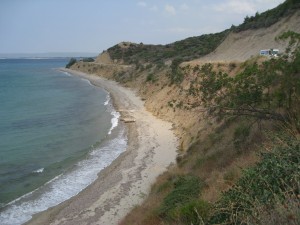
Recently, the New York Times (4 February 2012) published a story, “U.S. Plans Shift to Elite Units as It Winds Down in Afghanistan”, and the Washington Post (5 February 2012) followed with “U.S. to elevate Special Operations forces’ role in Afghanistan.”
From the Washington Post version, I noted the following salient points.
“The U.S. military is planning to elevate the role of Special Operations forces in Afghanistan as it shifts away from a combat focus to a mission that places greater emphasis on advising Afghan forces and raids to kill top insurgent leaders, senior U.S. officials said.”
“As American troop levels drop, U.S. commanders will by necessity have to rely more heavily on Afghan units to operate with minimal support from big, conventional Army and Marine units.”
“The new focus could rely on American Special Forces soldiers to fill out some of the advisory teams in the most violent areas of Afghanistan. The Special Forces troops would continue to advise and mentor elite Afghan units and the Afghan local police, a program in which villages form units to defend themselves. The primary mission of the Army’s Special Forces, also known as the Green Berets, is to mentor, train and fight alongside indigenous forces. The Special Forces teams also have the ability to marshal firepower from American warplanes for Afghan forces.”
Meanwhile, in an Op-Ed piece in the Washington Post on 9 February 2012, George F. Will wrote “the drone war is being waged more vigorously than ever….”.
The evolutionary development that is most impressive is evolving from using the firepower of American piloted warplanes to the use of unmanned drones mentioned by George Will.
In my book, “Cash on Delivery: CIA Special Operations During the Secret War in Laos” (www.rosebankpress.com), I wrote, “At the beginning of the “Global War on Terrorism”, which began in September 2001, the American military’s subsequent actions in Afghanistan brought new publicity to the use of special operations in denied areas. The use of small teams consisting of Rangers, Seals, Delta Force or others of this type of specially trained soldier in conjunction with the U.S. Air Force and U.S. Navy’s advanced smart bomb technology may turn out to be an advancement in warfare equivalent to the long bow, gunpowder, the machine gun, the tank or the airplane. The combination of global positioning systems, laser guidance, detailed maps, radar, J-Stars, and moving target indicators make the delivery of bombs by the United States Air Force and the United States Navy the most deadly and accurate ever.”
This early 2000s use of special operations forces and advanced technology for bomb delivery were precursors to the “drone war” we see today. The earlier advanced technology, mentioned above, was improved and eventually augmented by the drone for the delivery of missiles and even the missiles have evolved into more accurate and deadly munitions.
It is a simple calculus on the surface. Intelligence is collected by using technology, i.e., aerial surveillance, intercepts, etc, or by using human sources, i.e., informants, prisoners, and/or captured documents and equipment. The intelligence is analyzed and targets are developed. Action is taken in the form of drone attack or perhaps ground attack. If ground attacks are made, more intelligence may be gained from prisoners, captured documents or captured equipment, such as computers or cell phones.
Ground attacks might be made by all-American units, hybrid American-Afghan units or by all-Afghan units. In special operations in other countries, merely substitute the local participant from the country in which the special operations are taking place.
The special operations formula might be expressed this way, intelligence (technical and/or humint) + action (technical and/or human) = terrorist elimination. There is nothing new in this formula. What is new is the technology that can be used for intelligence collection or for action, i.e., drones.
Stephen Aftergood wrote in “Secrecy News”, 21 February 2012, “USSOCOM [U.S. Special Operations Command] and the CIA currently coordinate, share, exchange liaison officers and operate side by side in the conduct of DOD overt and clandestine operations and CIA’s covert operations, said Michael D. Lumpkin, acting assistant secretary of defense.”
“Our activities are mutually supportive based on each organization’s strengths and weaknesses and overall capabilities. Whichever organization has primary authority to conduct the operation leads; whichever organization has the superior planning and expertise plans it; both organizations share information about intelligence, plans, and ongoing operations fully and completely. Whether one or both organizations participate in the execution depends on the scope of the plan and the effect that needs to be achieved. Currently all USSOCOM and CIA operations are coordinated and deconflicted at all levels.”
http://www.fas.org/blog/secrecy/2012/02/deconflicted.html
The Osama bin Laden raid is a successful application of the special operations formula, with emphasis on all-American air and ground units.
The technical intelligence collection part of the formula can continue to be all-American for quite a while, but what we need to see, as soon as possible, is all-Afghan human intelligence collection and all-Afghan ground action units. Actually, I hope we never hear the details. Call me old school, but I prefer that the details remain secret. However, I would really love to believe that one day the special operations formula will be Afghan intelligence collection + Afghan action = terrorist elimination. We should all hope that all-Afghan special operations will result in the capture of terrorists and the seizure of equipment leading to significant new intelligence, thus contributing to a continuing cycle of intelligence + action = terrorist elimination.
Since evocations of the Vietnam War seem to rile so many, one hopes there is never an inclination to call it “Afghanization”.
The goal of worldwide special operations must be evolution from al-American to hybrid indigenous-American to (finally) all-indigenous action units with, at most, American participation as program managers who never participate “on the ground” but only in advising and providing support.




